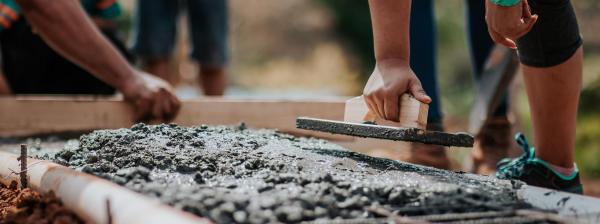There is no bus stop sign, but dala-dalas will stop anywhere to pick up a paying customer. Displaying the wear and tear of a 90-year-old man, these buses comb the potholed roads of Tanzania. Soon enough, the rackety shack on wheels wobbles into the unpaved turnout where I wait.
The boxy Toyota, a HiAce van, sold in the U.S. in the 1980s, seats about a dozen people comfortably. There are no seatbelts, so the number of seats depends only on the size of passengers. I find a seat in the middle row of the crowded van between two men headed home, both smelling of hard work.
A few minutes after I have climbed on, the lookout rattles coins in the riders’ faces and shouts “shillingi, shiliingi,” to the cabin. I always hand him exact change; it’s a strategy that I learned on my first dala-dala ride. (When expecting to get change, I was told the ride was more expensive for me.)
Mind the goat
Passengers speak Swahili a thousand words a minute. I understand numbers up to ten and general greetings, so most the conversation is lost on me. I imagine the kids talking about what they learned at school and the teenage girls gossiping about each other’s boyfriends. The woman in front of me begins to breastfeed.
Frequently a person will board clenching a flailing chicken and sit the duration of the ride with it on his lap, as if it were a briefcase.
I can hear the guttural murmur of goat underneath the backseat. I learn this is not unusual. Livestock, regardless of size, are welcome on dala-dalas. Frequently a person will board clenching a flailing chicken by its legs and sit the duration of the ride with it on his lap, as if it were a briefcase.
Avert your eyes; use your elbows
Buses at home ban things like food and drink. Here, there is a different set of rules. You can bring a goat, but you cannot take up more than one seat. If you have groceries, you should be able to hold them in your lap or put them under your feet. Do not make eye contact with men unless you would like to have their children. Be assertive. The lack of official stops means the driver will stop wherever you request, so long as you shout loud enough and know how to use your elbows.
The closer we get to town, the more crowded the dala-dala becomes. People stuff themselves into the aisles and against edges, standing, even hanging out the sliding door. Just when I think it’s full and that we can’t possibly fit another body, the lookout fits at least five more. There are 32 people crammed into this van. We spill out, sticky, at the final stop.
I am lucky if I get back home without a few broken eggs. For this reason I usually buy 14 instead of 12. I only buy what I can carry. I learn to work without a schedule and without my own seat. We are adaptable as humans. We change our normal. I am one of millions and to survive I must find ways to make their ways my own.
The ride home holds fewer people. Crumbs crunch under my sandals as I make my way toward a window seat. Even though the seat beside me is empty, I sit with my grocery bag in my lap, as we take speed bump after speed bump. I still make it home with only 13 eggs.
How to Ride a Dala-Dala
A dala-dala is its own breed of transportation; its own ecosystem. It’s not a taxi and it’s not a bus. Drivers may not be certified, cars may not be registered and you may or may not pay the same fare as the person sitting next to you. Sometimes your neighbour might even be a goat. Riding a dala-dala is a science, and all about being adaptable.
Here are some ways to make the experience fun instead of intimidating:
• Before you embark, ask a trusted local what to expect. What is your “bus stop” name? How much should you plan to pay? About how long should it take to get to your destination?
• Carry small coins so you can pay with exact change. Do not make it known how much money you are carrying.
• Don’t keep valuables in your pockets.
• Be economical about your space. It is a public vehicle, so hold whatever possible in your lap.
• Be assertive. Make sure the driver knows where to let you off.
• Let elderly adults and children sit. If you find yourself standing, find a place to brace yourself when the driver hits the brakes.
This article originally appeared in the Fall 2014 issue of Verge.
Add this article to your reading list



